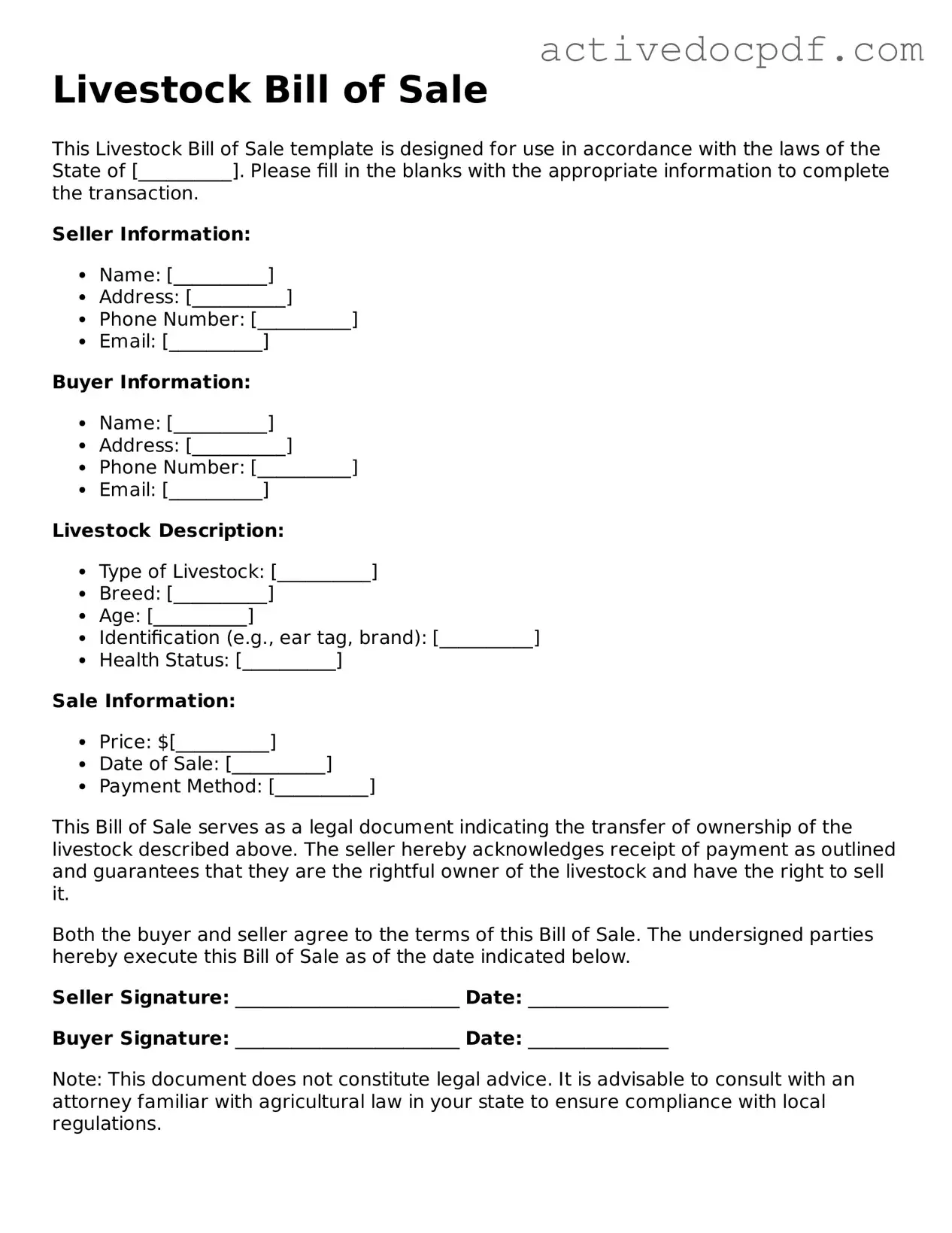What is a Livestock Bill of Sale?
A Livestock Bill of Sale is a legal document that records the transfer of ownership of livestock from one party to another. This document serves as proof of the transaction and includes important details such as the type of livestock, sale price, and the names and addresses of both the seller and buyer.
Why is a Livestock Bill of Sale important?
This document is important for several reasons:
-
It provides legal protection for both the buyer and seller.
-
It helps establish clear ownership, which is crucial for any future transactions.
-
It can be used for tax purposes, as it documents the sale and any potential profits or losses.
-
It may be required by local or state regulations.
A comprehensive Livestock Bill of Sale should include the following information:
-
The date of the sale.
-
The names and addresses of both the seller and buyer.
-
A detailed description of the livestock being sold, including breed, age, and identification numbers if applicable.
-
The sale price and payment terms.
-
Any warranties or guarantees related to the livestock.
Do I need a witness or notarization for the Bill of Sale?
While a witness or notarization is not always required, having one can add an extra layer of legitimacy to the document. Some states may require notarization for certain types of livestock transactions, so it is advisable to check local laws.
Can I use a Livestock Bill of Sale for different types of livestock?
Yes, a Livestock Bill of Sale can be used for various types of livestock, including cattle, pigs, sheep, goats, and horses. It is essential to accurately describe the specific type of livestock being sold to avoid any confusion.
What happens if I lose the Bill of Sale?
If the Bill of Sale is lost, it may be challenging to prove ownership. It is recommended to keep multiple copies of the document. If a copy is lost, the parties involved can create a new Bill of Sale, referencing the original transaction details, to help establish ownership.
Is a Livestock Bill of Sale the same as a contract?
While a Livestock Bill of Sale can serve as a contract, it is specifically focused on the sale of livestock. A contract may include additional terms and conditions beyond the sale itself, such as ongoing responsibilities or agreements related to the care of the livestock.
A Livestock Bill of Sale form can be obtained from various sources, including online legal document services, agricultural associations, or local government offices. It is important to ensure that the form complies with state laws and regulations.
